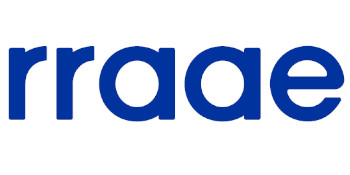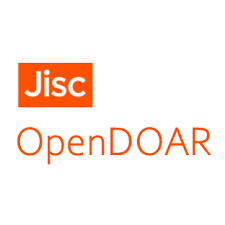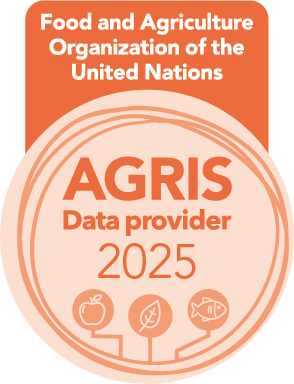Repositorio Institucional Universidad de Cuenca
Recent Submissions
Fog in the Andean Páramo: measurements, dynamics, and its influence on soil hydrology and evapotranspiration processes
(Universidad de Cuenca, 2022-09-15) Berrones Guapulema, Gina Marcela; Célleri Alvear, Rolando Enrique
The páramo ecosystem is characterized by a very moist climate and the continuous presence of fog and low-intensity rainfall. The most important páramo feature is the high water regulation capacity which in part might be related to the high frequency of fog and low-intensity rainfall (drizzle).
Therefore, it is essential to understand the hydrological processes that are linked to the ecology of the páramo. This study aimed the following three objectives: (1) to assess fog water estimates derived from three different types of fog gauges, and from them to understand its temporal dynamics and the importance of fog to annual rainfall; (2) to quantify the contribution of fog water deposition to soil moisture; and (3) to analyze the impact of fog on evapotranspiration rates, under different weather conditions (clear, foggy and rainy). Findings of this study show that fog occurs at very low intensities (0.2 mm h-1) reporting events of short term (<3 hours) at wind velocities below 4 m s-1. Most of the time fog appears combined with other type of precipitation (i.e. drizzle, light rain or rain) with fog tending to be more intense in the early morning, and at night. On average, daily fog amounts 1.37 mm. Overall, fog and drizzle are the major water sources to páramo vegetation, especially during late night-time and early mornings, when evaporation is low. The fog water deposition shows that only 4.5% of fog reaches the soil, contributing to soil moisture changes rather low (0.1-0.2 mm), whilst the combination of fog with low-intensity rainfall generate a higher contribution on soil moisture (as high as 4.3 mm). These events are potentially important for both soil moisture and stream flow, because of their long duration and high total amount per-event. Daily evapotranspiration rates are reduced by 43% due to the presence of mixed conditions (fog + lowintensity rainfall) compared with clear conditions (no fog and no rainfall). The net radiation is reduced by 9.2% during foggy conditions (only fog) mainly because its early morning hours occurrence is higher, and when solar radiation peaks fog occurrence is lower. While, during mixed conditions the net radiation is reduced by 33%. At the same time as less humid periods were reported, evapotranspiration was also low; suggesting that fog and drizzle presence can inhibit transpiration, limit water loss by evaporation and also could alleviate water stress.
Aplicación del sistema de costos basado en actividades (ABC) para los servicios de hospitalización: Área de Quirófano de ASOGALENICA S.A. Hospital San Juan de Dios
(Universidad de Cuenca, 2024-03-22) Méndez Orellana, Denisse Andrea; Pallango Astudillo, Camila Michelle; Peralta Zúñiga, Marco Leonardo
Hospital services encompass numerous resources that require efficient management to
ensure guaranteed and high-quality provision. This integrative project focuses on
implementing the Activity-Based Costing (ABC) system within San Juan de Dios Hospital,
specifically in the Operating Room Area. The primary objective is to provide a tool for the
efficient and effective management of resources, offering a detailed visualization of costs for
each activity. The research delves into the processes within the Operating Room Area,
highlighting the most relevant surgical services for the hospital. A detailed analysis is
conducted on subprocesses, activities, resources, and their associated costs. The proposed
ABC Model methodology enables the precise allocation of costs incurred by each activity.
Data collection focuses on the time dedicated to each activity and the consumption of
resources. The research output concludes with a description of the cost structure in the
Operating Room Area, specifically related to the most representative surgeries. This allows
the hospital to identify opportunities for operational efficiency and improvements in strategic
decision-making. Furthermore, recommendations are proposed to optimize costs without
compromising the quality of surgical procedures. The findings of this research contribute to
the advancement of resource management practices in hospital settings.
Rendimiento ejecutivo en estudiantes de la Facultad de Psicología de la Universidad de Cuenca en el periodo 2024-2025
(Universidad de Cuenca, 2025-02-28) Segarra Macancela, Karla Gabriela; Webster Cordero, Felipe Edmundo
Executive functions (EF) comprise a set of advanced cognitive abilities, including planning, decision-making, cognitive flexibility, self-control, selective attention, and problem-solving. These abilities influence academic performance and adaptation to the university environment. Although these skills have been widely studied in other contexts, there is a lack of specific research on their development in university students. The general objective of this study was to compare the executive performance of first- and ninth-semester students in the Psychology program. The methodological approach adopted was quantitative, with a non-experimental, cross-sectional, and descriptive design. A sample of 52 students was selected, including 28 first-semester and 24 ninth-semester students, with a similar number of males and females. To assess executive functions, the Tower of Hanoi test was used, which measures planning, working memory, and cognitive flexibility. Additionally, sociodemographic data, as well as the time and movements employed, were recorded. The results suggested that neither the academic semester nor the participants' sex significantly influenced executive performance.
Perfil socioeconómico y productivo de las familias encargadas de la crianza de cuyes en la parroquia rural de Ricaurte del cantón Cuenca, desde una perspectiva de género
(Universidad de Cuenca, 2025-02-11) Jarama Quito, Yadira Valeria; Puglla Vacacela, Delia Josefina; Machuca Machuca, Diana Angélica
The present research work proposed to analyze the socioeconomic and productive profile of guinea pig producing families in the rural parish of Ricaurte in Cuenca canton, with a gender approach. The study used an integrated methodology (qualitative, quantitative and participatory). The following techniques were used for data collection: survey, interviews and creative workshop. The data obtained were analyzed using descriptive statistics and content analysis techniques. The main results showed a female predominance, in age ranges from 35 to 54 years old. With primary education and raising improved guinea pigs, fed on cut rye grass and alfalfa, raised in cages. There is limited training (7,5%), technical advice (0,0%) and access to productive credit (0,0%). The most common diseases are tympanism and pediculosis. Marketing is carried out in four ways: fattening guinea pigs on the hoof/month, roasted guinea pigs for sale, slaughtered fattening guinea pigs/month, and breeding guinea pigs/month. The selling price varies according to the mode and marketing channel, with fattening guinea pigs being the most frequent, selling 5,3 guinea pigs per month at an average price of US 9,7 dollars. The main items of production expenses are: food and medicine. In conclusion, the guinea pig production process in the Ricaurte parish was characterized by limited access to credit and advice, a situation that limits the generation of economic resources and the improvement of women's socioeconomic conditions.
Modelo para optimizar variables críticas de inventarios en el sector retail de alimentos mediante el uso de diseño de experimentos
(Universidad de Cuenca, 2022-11-08) Ochoa Dávila, Damián Xavier; Llivisaca Villazhañay, Juan Carlos
Currently, retail is one of the most dynamic sectors in Ecuador and the world, as there is
direct contact with the final consumers, this has evolved with stability in recent years and
with great projection for the future. In Latin America in 2017 sales amounted to $1.9
billion, expecting that by 2022 it will reach $2.35 billion. The problem arises in how retail
companies relate the variables: arrangement and location of products on a shelf and number
of existing branches with the variable response “selling price”, this arises since most
retailers are not aware of the impact of these factors on their business. For this reason, a
general model based on the experimental design was developed to analyze the relationship
of a variable with the mentioned factors in order, to find optimization to maximize retail
sales and at the same time to improve the management, inventory processes, association
and arrangement of the ítems, for which the design of multivariate experiments was used.
The literature review was conducted using the documentary research technique. The
analyzed study data were collected from previously conducted academic essays, where they
were treated and analyzed using statistical software with its Design of Experiments module
where the results were interpreted, which showed that, although individually the
arrangement and location of products on a shelf and number of branches of the company
are essential to achieve maximum sales in a retail store, the relationship between these two
factors does not exist. Likewise, it was shown that the most significant factor was the
arrangement of the articles, as opposed to the number of branches, which was possible to
show that it is an adjustment factor, which needs to be improved.


















